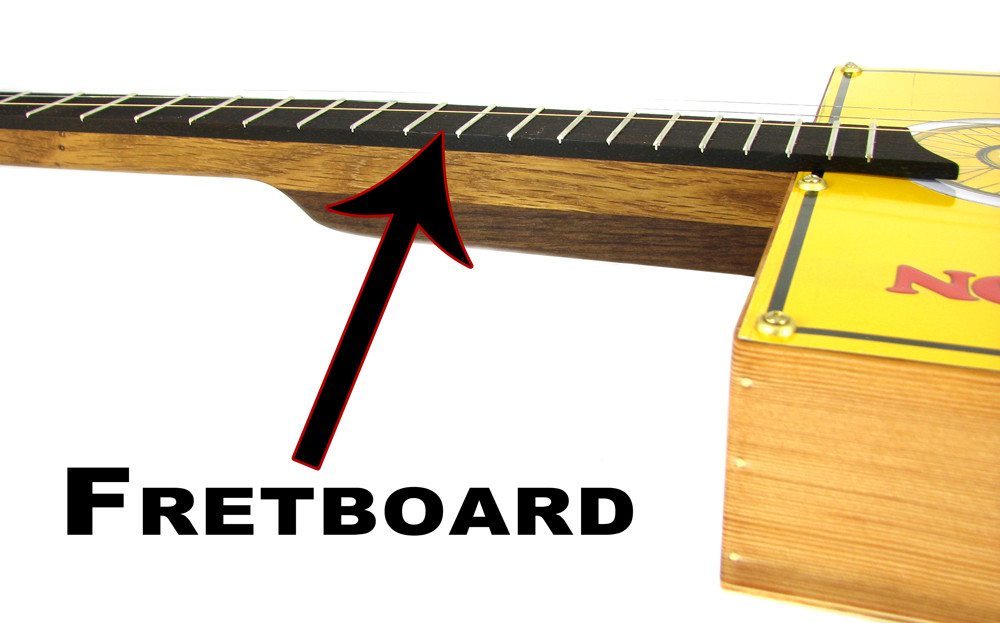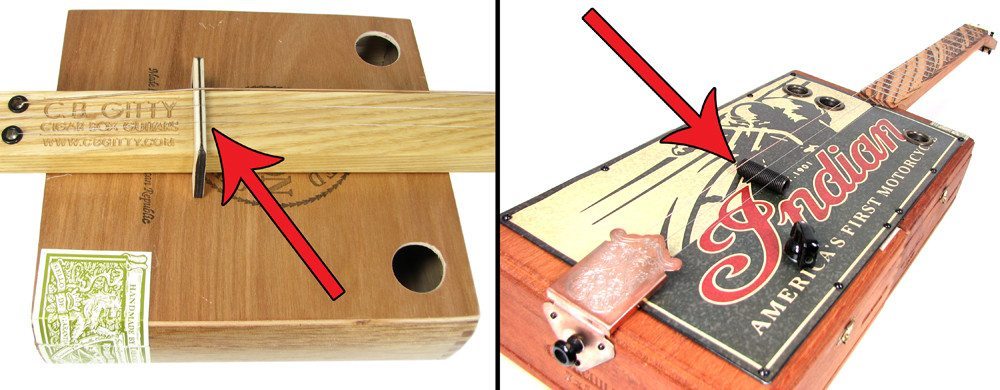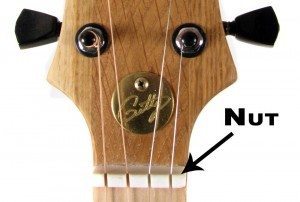 Sound holes are openings cut or drilled into the sound board (top) of an instrument to let the sound vibrations escape, which increases the acoustic volume of an instrument. Sound holes come in a wide range of sizes and shapes.
Sound holes are openings cut or drilled into the sound board (top) of an instrument to let the sound vibrations escape, which increases the acoustic volume of an instrument. Sound holes come in a wide range of sizes and shapes.
On a traditional acoustic guitar, seen in the top portion of the photo, sound holes are usually round and centered in the upper part of the instrument. On cigar box guitars, as shown in the lower part of the photo, the number, shape and size of the sound holes can vary widely, from simple drilled round holes to fancy F-hole style openings (such as are seen on violins).
There is a lot of theory and debate that goes into what is the right side for a sound hole. In general on a cigar box guitar a single sound hole about 3/4″ in diameter is usually sufficient, though builders will often use more or larger sound holes for aesthetic purposes, and usually this doesn’t do any harm.
Sound holes can be left bare, as shown in the photos to the left, or can have various covers placed over them or inserts placed into them. A popular sound hole insert on cigar box guitars are simple metal grommets, sink drain filters and other metal pieces.




 A nut is a piece of hard material placed at the top of the
A nut is a piece of hard material placed at the top of the 

